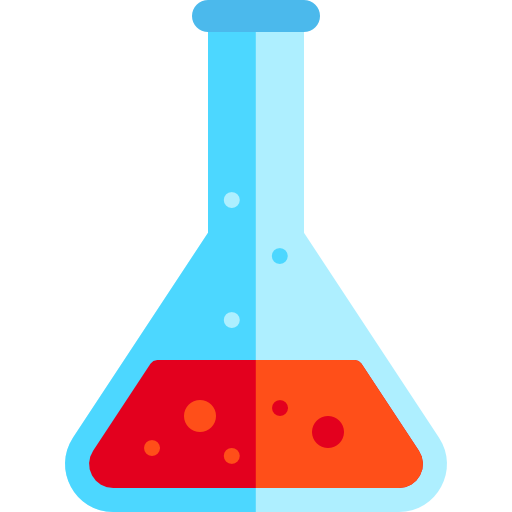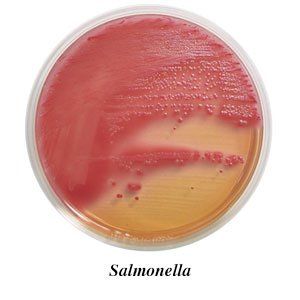R & F® Salmonella (includes S. Typhi) Chromogenic Plating Medium
Request a Quote

Colony Appearance

Mechanism

Industry Types

Advantages/Benefits
1. Our medium is unique in that only non-coliform enterics that grow on our medium and ferments the 2-deoxy-D-ribose sugar are Salmonella sp. (80 Salmonella strains tested -all 4 subgroups of Salmonellaincluding Typhi/Paratyphi fermented the 2-deoxy-D-ribose sugar).
2. E. coli and Citrobacter sp. strains that ferment and do not ferment 2-deoxy-D-ribose are differentiated from Salmonella by being positive for β-galactosidase, producing purple and blue-green colonies, respectively.
3. High sensitivity and specificity and has been used in clinical labs for testing.
4. Most competitors’ chromogenic media use the C-8 esterase, detected by the caprylate chromogenic substrate, which is sensitive for Salmonella sp. However, the C-8 esterase activity is also positive for some non-enterics (i.e. Pseudomonas, Acinetobacter sp. and Aeromonas sp.) and enterics (i.e. Enterobacter sp., Klebsiella pneumoniae, Hafnia alvei and Citrobacter freundii) which eventually will interfere with Salmonelladetection–false positives.
5. The cost of the C-8 esterase detection chromogenic substrate is more expensive as compared to our Salmonella medium.
6. Our medium results in a simple and inexpensive agar for detection and confirmation of Salmonella.
7. The shelf life of prepared plates remains stable for at least 60 days, stored in the dark at 2-8°C. One bottle of plating medium powder and one box of supplements will make approximately 525 plates.

Publications

Ordering Information
M-0650
R & F® Salmonella (S. Typhi) Chromogenic Detection System (400 g Bottle of Powder & one Supplement Box – Makes – 500-550 Plates)
M-0600
R & F® Salmonella (S. Typhi) Chromogenic Plating Medium (400 g Bottle)
M-0610
R & F® Salmonella Supplement for Plating Medium (1 Box)
M-0660
R & F® Salmonella (S. Typhi) Chromogenic Prepared Plate (Minimum Order of 20 Plates – Shelf life is 60 Days)

